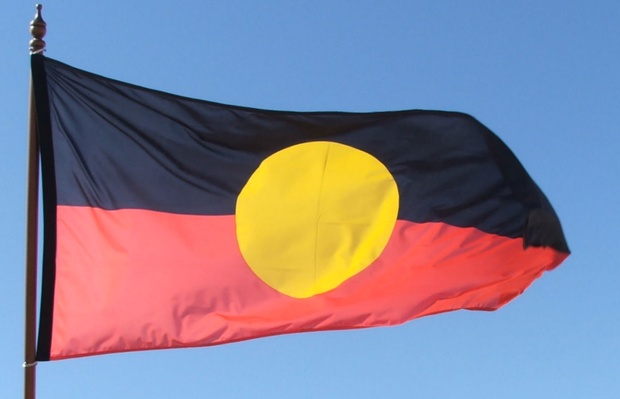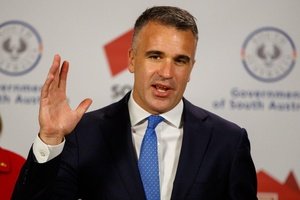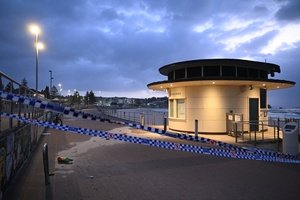This is an all-too familiar response from those learning Indigenous histories in Australia.
The recent take-up of false claims – such as that a Voice to Parliament would result in “special privileges” — suggests large gaps in public understanding of the Indigenous political movements that preceded the Voice.
Considering what children have learnt in our schools in the past, this should not surprise us.
Our research, soon to be published in the Nordic Journal of Educational History, shows that for over 100 years, the Victorian school curriculum has failed to give generations of students the chance to learn about Indigenous political movements.
What we did
Given Australia didn’t have a national curriculum until 2010, we looked at Victorian curriculum documents from the past 120 years to get a sense of what children have been taught over this time. We compared this with what Indigenous political campaigns were expressing at the time.
We found Indigenous political movements were largely missing from Victorian curriculum materials.
When they were included, it was in very limited ways that did not accurately reflect the diversity and depth of Indigenous standpoints, methods, and objectives.
We found the Victorian curriculum had routinely failed to grapple with Indigenous sovereignty.
In particular, we noticed there were three key moments in Indigenous political history that were missing.
1. 1880s Coranderrk Campaign
Coranderrk was an Aboriginal reserve established by the colony of Port Philip in 1863 on Wurundjeri land.
The Wurundjeri community at Coranderrk, which also included people from other Kulin nations, cultivated a highly successful farm. Because this farm was coveted by settlers, they pressured the colonial government to shut down the reserve and sell the land.

The Coranderrk community staged a sustained public campaign to protect their land. They wrote letters and petitions to ministers and newspapers and sent deputations to Melbourne.
Their efforts culminated in the 1881 Parliamentary Coranderrk Inquiry.
The inquiry drew sustained attention to Aboriginal peoples’ aspirations for land and for the end of policies of “protection”. While ultimately unsuccessful, the inquiry and campaign created a lasting public record of Aboriginal activism and testimony. The Coranderrk campaign is crucial for understanding Aboriginal experiences of political processes.
Yet we found the Coranderrk campaign was not included at all in the historical Victorian curriculum documents we examined.
Instead, curriculum documents from this period tended to depict Aboriginal people as a “dying race”. They tended to justify settler violence as a “natural” response to adverse conditions on the colonial frontier.
2. 1960s-ending assimilation
The momentum of Aboriginal political movements grew in the post-war era.
There was the 1965 Freedom Ride (modelled on those in the US) through New South Wales, and the fight to retain the sole remaining Aboriginal reserve at Lake Tyers in Victoria in the same year. These exposed how assimilation legislation that claimed to enable Aboriginal people’s access to economic and social “equality” in fact only denied them those rights.
The modern land rights movement was born when in 1966, Vincent Lingiari – a Gurindji man upon whose lands the Wave Hill cattle station was located – led a strike in protest of the poor working conditions the Gurindji people endured. This came to be known as the Wave Hill Walkoff.
It became a struggle for control over the land. The Gurindji people who were strikers remained for seven years as illegal “occupiers” of their own Country.
We found these growing aspirations for rights and land were not reflected in the curriculum. Through the mid-20th century until the late 1960s, the curriculum focused mainly on British history.
We found celebratory narratives of figures like Captain Cook, William Dampier and Major Mitchell, and the growth of industry and the Australian “nation”.
Where Indigenous people were present in the curriculum, they were presented as relics of the past rather than political agents in their own right.
3. 1988 Treaty campaign
On January 26 1988, as Australia celebrated the 200th anniversary of the arrival of the first fleet into Kamay (now Botany Bay), over 40,000 people marched through the streets of Sydney with red, black and yellow protest banners and chants of “White Australia has a black history”.
A few months later, on Jawoyn country east of Katherine in the Northern Territory, the Northern and Central Land Councils presented the Barunga Statement to then-prime minister Bob Hawke. It called for a treaty between the Commonwealth and Indigenous nations, and for the recognition of sovereignty.
Hawke committed to work towards a treaty, but recognising prior Indigenous sovereignty proved a major stumbling block.
A later Senate Standing Committee tasked with investigating the feasibility of a treaty recommended focusing on education and attitudinal change first.
Unfortunately this history was not well represented in the curriculum material we studied. This history is crucial for understanding how national representation and treaty have long been a part of Indigenous demands for political change. After the bicentenary protests, curriculum shifted to include more Indigenous perspectives, but this was followed by backlash known as the “history wars” (a divisive public debate about whether or not acknowledging past violence against Aboriginal people represented a “black armband view” of history).
Is Australia’s curriculum changing?
A new version of the Australian curriculum (which is used by the states to guide their own curricula), was released in 2022 and will be implemented in coming years.
It includes a focus on “truth-telling” within the broader history of Australia. This could signal an important shift from past practices. (Unfortunately, this shift will occur after the Voice referendum).
But it may address some of the failings our research identified.
The new Year 10 course in the national curriculum suggests class discussion of the Day of Mourning, the Pilbara strike, the Wave Hill walk off, the 1972 Tent Embassy, and more.
The revised content also lists for discussion key historical individuals, organisations, and the methods used to campaign for change.
While highlighting Indigenous political movements can help build understanding of Indigenous aspirations, the curriculum still does not directly grapple with Indigenous sovereignty as a concept.
This is why organisations such as the National Indigenous Youth Education Coalition, through the Learn Our Truth campaign, have called for schools to reflect on what Indigenous sovereignty means and to teach the history of colonisation.![]()
This article is republished from The Conversation under a Creative Commons license. Read the original article.














